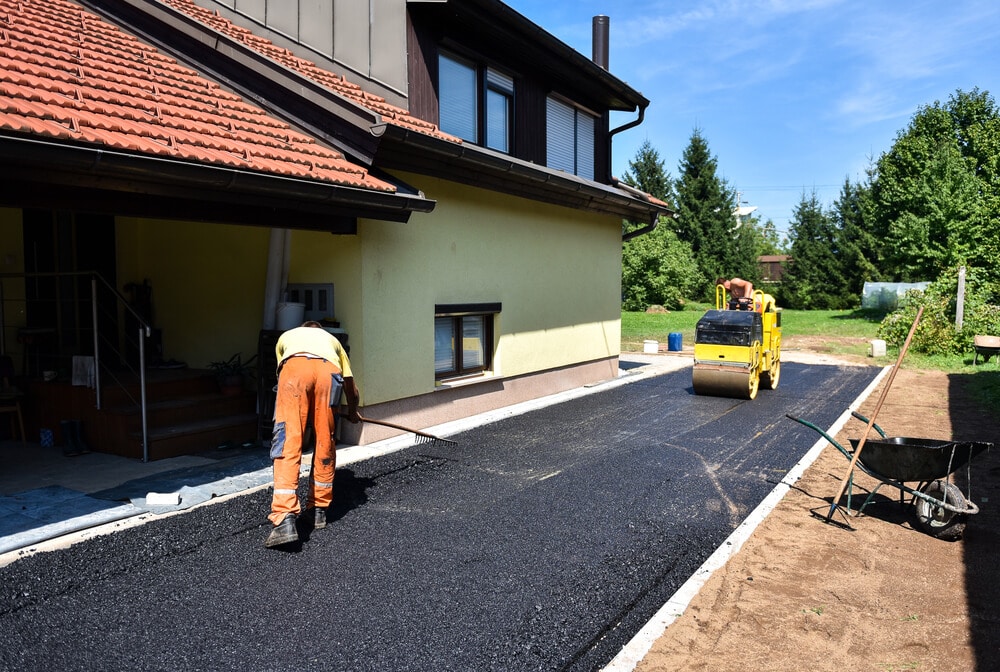Proper installation and maintenance are essential to ensure your asphalt paving lasts long. Ideally, asphalt should be installed during hot summer months. But what about in areas where cold weather is perennial, can asphalt paving be done?
Asphalt is a durable paving material commonly used in driveways, parking lots, roads, and other paved surfaces. But like any paving material, asphalt requires the proper installation to ensure quality.
When it comes to asphalt paving, weather conditions and outdoor temperature are crucial. Installing asphalt in a cold-weather can significantly affect the durability and strength of asphalt.
Your asphalt paving project can fall victim to cold weather that can dramatically shorten its good years without proper planning. It is vital to choose the right schedule for asphalt installation.
Why check the weather when scheduling asphalt installation?
When scheduling asphalt paving, homeowners should consider weather conditions for the next couple of days, including ground temperatures, outside temperature, rainfall forecast, and humidity. Why so?
Asphalt mixture comprises petroleum-based bitumen, crushed stone or aggregates, binders, and sand. Asphalt is typically heated to a temperature of 280 degrees Fahrenheit or higher to activate the bituminous compound. The hot mix is then delivered to the site and installed while still pliable.
Maintaining the temperature during the installation is vital so that the asphalt mix can be spread evenly throughout the surface. After it is laid, asphalt is then compacted and pressed into place. It then sets and hardens to become the durable pavement you walk on or drive over. However, the asphalt hardens too quickly if it is overly cold outside. Likewise, frozen or cold soil can make it impossible to roll and press asphalt.
What is the ideal temperature for asphalt paving?
Asphalt hot mix starts to cure once its temperature is about 220 degrees Fahrenheit. When it dips to 185 degrees Fahrenheit, the bitumen sets, stiffens, and becomes dense, making it hard to distribute evenly.
Likewise, the ambient and ground temperatures should not be lower than 50 degrees Fahrenheit; the asphalt mix hardens faster and becomes difficult to roll and compact. Other environmental factors like an overly dry atmosphere, cold or frozen ground, and high winds can cool asphalt prematurely. Florida asphalt paving experts from ABC Paving stressed that all of these factors should be considered when installing asphalt.
Usually, asphalt paving contractors use infrared thermometers to monitor temperature during colder months. Accurate and continuous reading ensures proper asphalt installation.
Once poured, asphalt temperature cools down quickly, so asphalt installers should immediately compact and roll the asphalt. If you are doing DIY asphalt paving, work in small sections so you can pour by batches and then press asphalt quickly before it hardens.
Can you install asphalt in cold weather?
While asphalt paving during the winter season should be avoided, it is not impossible, especially for an experienced crew.
To maintain the desired asphalt temperature, paving contractors have the necessary tools and equipment, such as infrared thermometers, standardized nomographs, industrial heaters, and computer software. They know how to produce ideal results even against unfavorable weather conditions.
There are also unique asphalt mixes that are designed for the winter season. Unlike regular asphalt, winter asphalt has lower heat requirements and doesn’t need to be heated consistently. It is often available between January and March.
Understanding the potential effect of cold weather, the paving crew anticipates the amount of time to work with the mixture. The paving contractors closely monitor the temperature to ensure that the asphalt is still pliable. They work quickly to distribute the asphalt evenly and compact it to achieve the desired results.
Again, asphalt paving in a cold climate should only be done with the help of experienced pavers. If you plan to DIY install asphalt, pick a day during summer for this project. At most, you can try patching cracks and potholes in your asphalt driveway.
Final Thoughts
Finally, weather extremes dramatically impact the asphalt curing process, the internal makeup of asphalt, and the nature of the installation process. Asphalt can harden much faster than expected in cold weather, giving you no time to spread, compact properly, and press the asphalt before it sets. Meanwhile, if the weather is too hot and humid, the asphalt can remain in its liquid state and unable to set correctly. The result can be an asphalt pavement with poor quality. Hence, choosing the proper schedule for your asphalt paving project is essential.



